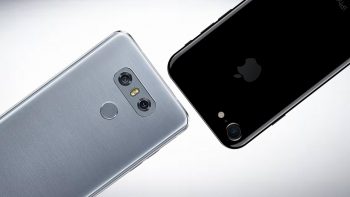
Former Google exec believes Android photography is years behind iPhone, and he’s wrong [OPINION]
Some of you may recall Vic Gundotra who was at the helm of Google’s social efforts and was a pretty exciting face in Google I/O presentations close to a decade ago. He has since left the company for other endeavors, but that doesn’t mean he doesn’t have anything to say about some of his former employer’s work.
Gundotra took to Facebook to share some photos he took of his children on an iPhone and noted how computational photography (which Apple uses in their Portrait Mode to make for that natural-looking bokeh effect) allowed him to get a quality shot without the need to lug around a big ol’ DSLR.
It’s true: for most shooting scenarios, smartphone cameras of today can totally allow you to leave your dedicated snappers at home on lesser occasions. (Though we wouldn’t exactly say the DSLR is anywhere near “dead,” as he puts it, especially when his own example has noticable flaws which a trained eye will say looks more simulated and artificial than something a DSLR would produce.)
But it was the trailing bits of the post that got everyone’s feathers ruffled. Gundotra contends that while hardware advancements are always being made and most companies like Samsung are at or near the cutting edge, it’s the software that makes the big differences. He felt Google was leading in that aspect years ago, though they now lag behind in that respect. (Which is odd considering the Pixel has the leading camera on the market, with much of its chops being owed to, you guessed it, computational photography.)
This came from a Pixel, and it looks Amazing.
He also acknowledges that while companies like Samsung may offer better optics, they can mostly only get the full benefit of that in their own proprietary software as it takes “years” for Android to support these new technologies.
There’s historical evidence of this with Google only having implemented support for the RAW format relatively recently (as of Android 5.0, to be specific), but if we’re being fair, OEMs have been able to (and actually did) implement these types of improvements and advancements on their own without the need to wait on Google. If we’re talking about Android at its most basic level, sure, he has a point. But there’s almost no one who uses Android at its most basic level, even those who have “stock-like” Android phones.
Apple, he says, doesn’t suffer this problem because they can fully support their innovations as soon as they want to since they control both the software and hardware going into their phones and tablets.
That, folks, is enough to make Vic Gundotra say he’ll never use an Android phone for photography, even though it’s been proven that some Android phones can transcend the iPhone in a variety of different shooting modes and scenarios.
OK, I admit I came at this a bit passively aggressively. What I really mean to say here is that Vic Gundotra either does not understand the current state of Android or the smartphone market in general, or he’s that scorned lover who’s irrationally attacking their ex because deep down inside they wish they’d never broken up. Android photography is fine. It’s great, actually, and it’s never been better.
Related: Android Phones With The Best Camera

